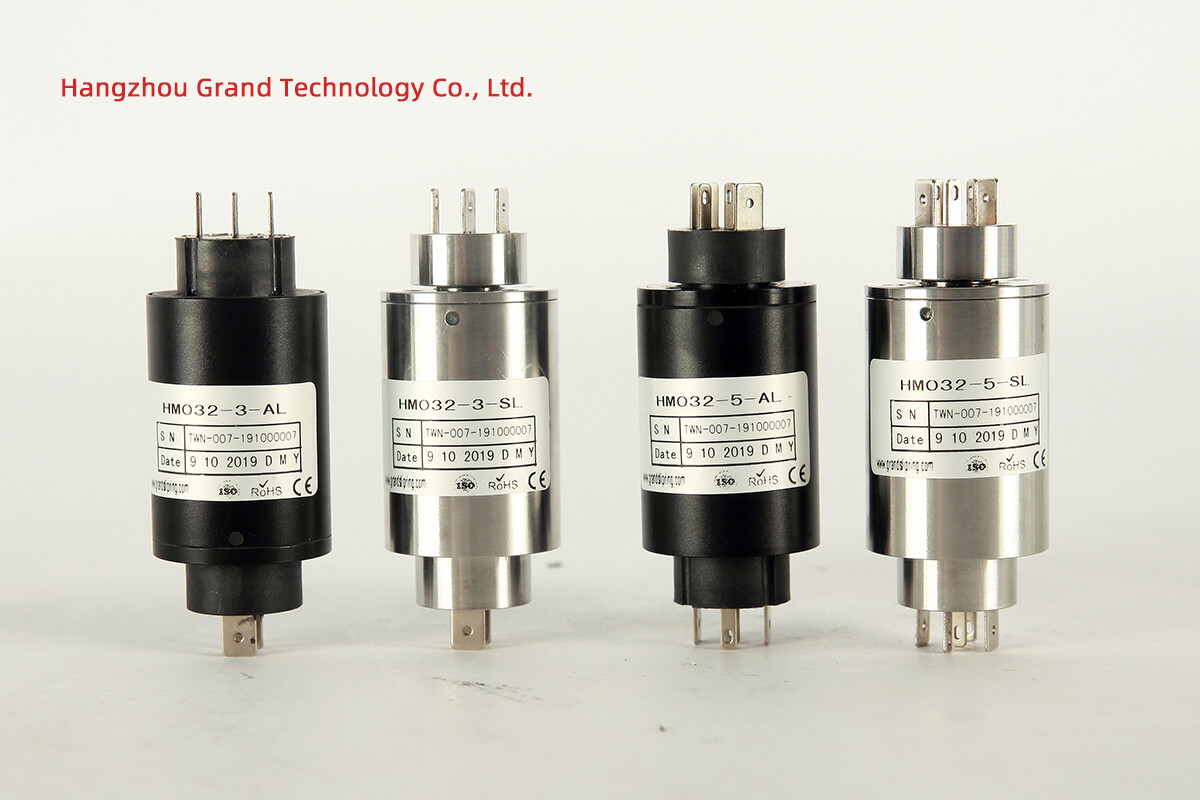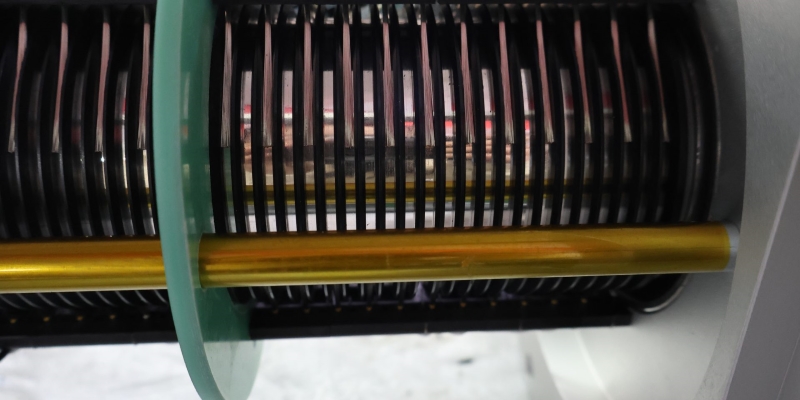This article provides a deep dive into the nature, operation, and applications of mercury-wetted slip rings – components that have become indispensable in various high-performance and critical reliability environments. We’ll explore the benefits and concerns associated with their use, technical specifications, and market trends, and address commonly asked questions.
Introduction to Mercury-Wetted Slip Rings
In the world of electromechanical systems, ensuring a continuous and reliable connection through rotating assemblies poses a significant challenge. Mercury-wetted slip rings emerge as a sophisticated solution to this problem, leveraging the unique properties of mercury to create a stable electrical connection that far surpasses that of their traditional counterparts.
What are Mercury-Wetted Slip Rings?
Mercury-wetted slip rings are a type of rotary electrical joint designed to transmit electrical signals and power across rotating interfaces. What sets them apart is the use of liquid mercury as the conductive medium—this metal boasts both high conductivity and a unique ability to form an unbroken, consistent contact, even in motion. By employing a pool of mercury within a carefully sealed housing, these slip rings ensure that metal contacts don’t physically touch, reducing wear and maintaining an excellent, near-perfect connection.
Basic Concept and Functionality of Slip Rings
The core function of any slip ring is to allow for the unfettered transmission of power and electrical signals from a stationary part of the apparatus to one that rotates. Traditionally, slip rings achieve this through metal brushes that maintain physical contact with a rotating ring. However, this contact can lead to wear and tear, noise, and signal degradation over time.
The Special Role, Advantages, and Applications of Mercury-Wetted Slip Rings
Mercury-wetted slip rings are entrusted with a special role in scenarios where conventional slip rings might fail to deliver. The primary advantages they offer include nearly negligible electrical resistance at the contact point resulting in reduced heat generation and power loss, alongside maintaining a clean and consistent signal which is vital for delicate communications equipment. Their durability also means that they are favored in applications with high cycles or harsh environments.
The applications for mercury-wetted slip rings are diverse, ranging from high-precision laboratory instruments to industrial control systems. They are also indispensable in sectors where dependable signal transmission is crucial, such as in medical equipment, aerospace and defense systems, and advanced manufacturing processes.

In establishing a reliable electrical interface for rotary systems, mercury-wetted slip rings stand out. Their design reflects an elegant solution to a complex problem, ensuring that they continue to be irreplaceable in many advanced technological settings. With their superior performance and unmatched reliability, these components transcend their simple role, defining the cutting edge of electrical transfer technology in dynamic systems.
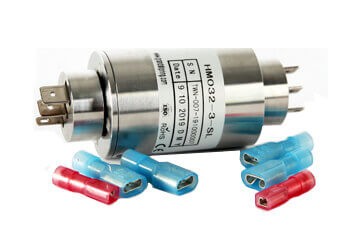
Understanding Mercury-Wetted Slip Rings
The sophisticated design and superior performance of mercury-wetted slip rings have made them pivotal in pushing the boundaries of what’s possible in various cutting-edge technologies. By innovatively incorporating mercury—a metal known for its excellent conductivity and fluidity—these slip rings ensure an unrivaled electrical continuity that traditional slip rings struggle to match.
How Mercury-Wetted Slip Rings Work
At their core, mercury-wetted slip rings consist of a stationary block and a rotating ring, much like their conventional counterparts. However, instead of relying on physical contact through brushes, these devices utilize a pool of mercury. The mercury, contained within the device, makes electrical contact with both the stationary and rotating parts. As the ring rotates, the mercury remains in constant contact with both sides, facilitating an unbroken electrical pathway. This design significantly reduces the friction, wear, and electrical noise typically associated with mechanical contacts.
Unique Benefits of Using Mercury
The decision to use mercury in these slip rings isn’t arbitrary. Mercury’s properties offer several unique benefits over traditional slip ring technologies:
- Unmatched Conductivity: Mercury’s liquid state and high conductivity ensure minimal resistance at the contact points, resulting in more efficient power transmission.
- Consistent Performance: The mercury pool maintains a consistent electrical connection, unaffected by surface irregularities and wear that can plague traditional brushes and rings.
- Durability: With no physical contact between solid components, mercury-wetted slip rings exhibit significantly reduced wear, extending their operational lifespan.
- Less Noise: The seamless connection reduces electrical noise, a crucial advantage in sensitive communications equipment and precision instruments.
Compared to traditional slip rings, these mercury-based variants represent a leap in both technology and performance, offering a solution that is both elegant and practical in applications where reliability and accuracy are paramount.
Remarkable Performance in Specific Cases
The remarkable performances of mercury-wetted slip rings can be best appreciated through specific cases across a variety of sectors:
- Aerospace and Defense: In the aerospace sector, the reliable transmission of signals is critical, particularly in satellite communications and radar systems. Mercury-wetted slip rings ensure that data can be transmitted without interruption or degradation, a non-negotiable requirement in defense operations.
- Medical Equipment: High-precision medical imaging systems, such as MRI machines, benefit from the reduced electrical noise and reliable performance of mercury-wetted slip rings, ensuring that the quality of diagnostic images is not compromised.
- Industrial Automation: In environments where machines operate at high speeds and require precise control, the durability and consistent performance of these slip rings minimize downtime and maintenance, contributing to smoother and more efficient production processes.
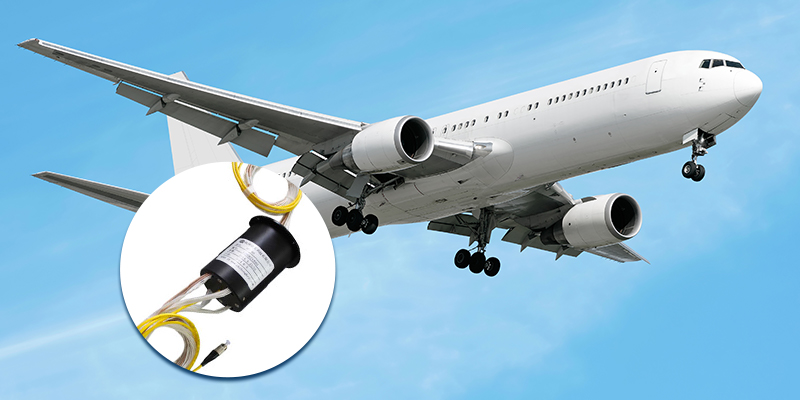
Through these applications, mercury-wetted slip rings demonstrate their capability to deliver exceptional performance where traditional slip rings might not suffice. Their successful implementation in such critical and demanding fields underscores the unique advantages they bring to the table, continually proving themselves as an indispensable component of modern technology.
Technical Specifications of Mercury-Wetted Slip Rings
Mercury-wetted slip rings, with their unique design and construction, have set a high standard in the realm of electrical engineering by offering unmatched performance combined with longevity. To understand why they are held in such high regard, it’s essential to delve into their technical specifications, the significance of each, and the factors that influence their overall productivity and efficiency.
Common Specifications and Features
Mercury-wetted slip rings possess several key specifications that distinguish them from their traditional counterparts:
- Current Carrying Capacity: This specification varies but is considerably high due to mercury’s excellent conductivity. It indicates the maximum current the slip ring can handle effectively.
- Voltage Drop: Thanks to the minimal contact resistance provided by mercury, these slip rings have a remarkably low voltage drop, ensuring efficient power transmission.
- Operating Temperature Range: They are designed to work across a wide range of temperatures, which is critical for applications in extreme environments.
- Contact Resistance: Characteristically low, which enhances their reliability and reduces the likelihood of signal degradation.
- Electrical Noise: Significantly lower compared to traditional slip rings, providing a cleaner signal which is essential in sensitive applications.
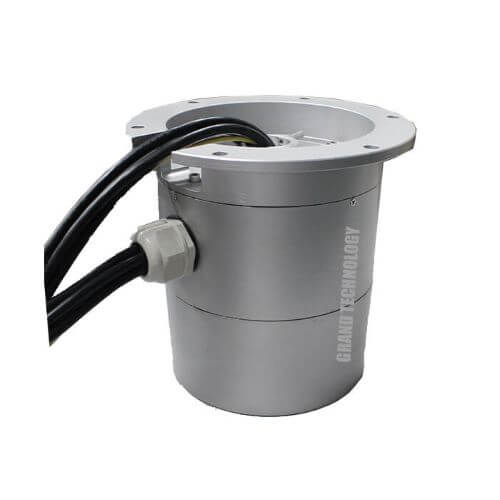
Significance of Specifications and Impact on Performance
Each of these specifications plays a vital role in the overall performance of mercury-wetted slip rings:
- Current Carrying Capacity ensures that the slip ring can be used in applications with high power requirements without the risk of overheating or damage.
- Low Voltage Drop is crucial for maintaining energy efficiency, particularly in complex systems where power loss can be critical.
- The Operating Temperature Range allows these slip rings to be versatile across various industries, including those operating under harsh conditions.
- Low Contact Resistance is directly linked to the longevity and reliability of the slip ring, ensuring stable performance over its lifecycle.
- Reduced Electrical Noise is particularly important in precision applications, where even minor interference can compromise the integrity of data transmission.
Factors Impacting Productivity and Efficiency
While mercury-wetted slip rings are distinguished for their high performance, several factors can impact their productivity and efficiency, particularly related to the characteristics of mercury:
- Mercury Containment: Given the toxicity and fluidity of mercury, ensuring it remains contained within the slip ring is paramount. Any leakage could not only pose health risks but also affect the slip ring’s performance.
- Temperature Sensitivity: While these slip rings have a broad operating temperature range, mercury’s physical properties can change dramatically with temperature fluctuations, potentially affecting its conductivity and, consequently, the slip ring’s performance.
- Environmental and Health Safety: Handling and disposal of mercury require strict adherence to safety standards, and any lapses can lead to downtime and increased operational costs.
Understanding these technical specifications and associated factors is crucial for those considering mercury-wetted slip rings for their applications. Their unparalleled performance comes with a set of considerations, particularly regarding the handling of mercury, that must be meticulously managed to fully capitalize on their advantages. As technology evolves and environmental standards become more stringent, the design and implementation of mercury-wetted slip rings continue to adapt, ensuring that they remain a viable and effective solution for challenging electrical transmission requirements.
Advantages and Disadvantages of Mercury-Wetted Slip Rings
Mercury-wetted slip rings serve as a cornerstone in applications demanding consistent and reliable electrical transmission across rotating interfaces. While they offer a myriad of benefits, they also come with a specific set of potential drawbacks, escalating from environmental implications to safety concerns that cannot be ignored.
Advantages of Mercury-Wetted Slip Rings
Mercury-wetted slip rings offer several key benefits that make them a preferred choice in a variety of applications:
- Unparalleled Conductivity: Leveraging the high conductivity of mercury, these slip rings allow for an almost perfect electrical connection, resulting in exceptional signal or power transmission.
- Long Service Life: The lack of physical contact between solid components reduces wear and tear significantly, thus extending the life expectancy of these components.
- Reduced Noise: Mercury-wetted slip rings inherently produce less electrical noise due to the seamless connection, a critical asset in precision communication systems and advanced scientific instrumentation.
- High-Speed and High-Frequency Operation: Their superior performance isn’t compromised, even in high-speed or high-frequency applications, making them versatile in a broad range of industries.
Drawbacks and Considerations
While mercury-wetted slip rings do have unique strengths, they are not without potential drawbacks and considerations, especially from environmental and safety perspectives:
- Potential Health Hazards: Mercury, a known neurotoxin, poses significant health hazards if improperly handled or in case of leakage.
- Environmental Impacts: Mercury is extremely hazardous to the environment and wildlife. Its disposal or accidental release can cause severe environmental contamination.
- Operational Safety: The use of mercury requires stringent safety measures during the manufacturing, storage, and disposal phases. Accidental spills can prove costly both from remediation and human safety viewpoints.
- Regulatory Compliance: Due to mercury’s environmental and health hazards, its use is heavily regulated in many industries and countries. Complying with these rules can add to the operational complexities and costs.
Understanding these advantages and disadvantages empowers organizations and individuals to make an informed decision about using mercury-wetted slip rings in their operations. The potential benefits and productivity gains must be weighed carefully against the associated risks and costs, ensuring optimal results coupled with safe and sustainable operations. Despite these challenges, with proper handling and control measures, mercury-wetted slip rings continue to justify their place in high-performance applications in sectors as diverse as aerospace, medicine, manufacturing, and defense.
Mercury-Wetted Slip Rings Safety Criterions
Mercury-Wetted Slip Rings Types
Application Areas of Mercury-Wetted Slip Rings
Mercury-wetted slip rings, despite their associated concerns, have found application in several high-tech and critical sectors. Their unique properties and high performance—most notably their superior conductivity and extendable lifespan—have made them indispensable in specific areas, such as telecommunications, radar systems, and global positioning systems.
Sectors Employing Mercury-Wetted Slip Rings
- Telecommunications: With rapidly evolving technologies, the telecom sector requires components that provide low electrical noise and can handle high data speeds. Mercury-wetted slip rings come in particularly handy in satellite communication, where data integrity is paramount.
- Radar Systems: Radar systems, with their importance in aviation, maritime, and defense, require reliable and noise-free data transmission. The longevity and low noise characteristics of these slip rings make them a perfect fit for this mission-critical application.
- Global Positioning Systems (GPS): GPS technology has seeped into every aspect of modern life, from navigation to earth observation. The high speed and precision provided by mercury-wetted slip rings contribute to the accuracy these systems are known for.
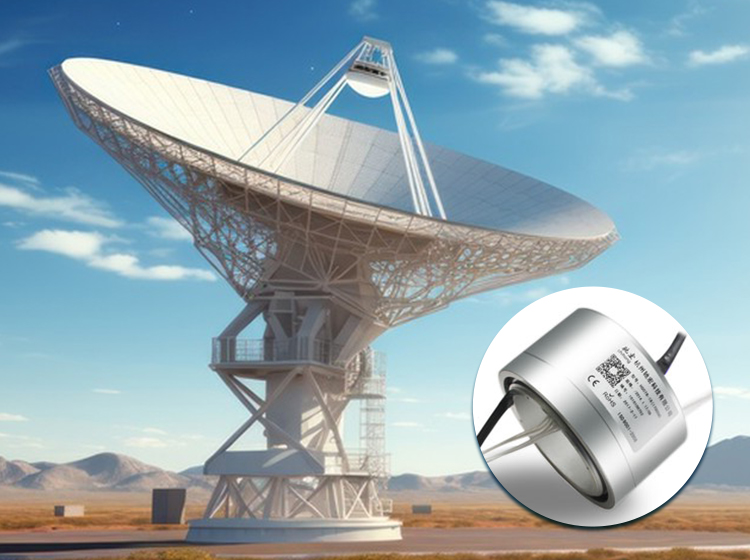
Real-World Applications and Case Studies
- Satellite Telecommunication: Mercury-wetted slip rings are a core component in satellite antennas. Their ability to minimize signal losses and noise promotes clear and uninterrupted communication links, crucial for broadcasting, weather monitoring, and scientific data collection.
- Air Traffic Control Radar: These slip rings are extensively used in rotating antenna applications, such as Air Traffic Control (ATC) radar. The long life and low electrical noise characteristics of mercury-wetted slip rings help ensure the radar consistently provides accurate data, aiding with smooth and safe air traffic management.
- GPS-Controlled Autonomous Vehicles: The precision and reliability of data transmission through these slip rings are beneficial in autonomous or semi-autonomous vehicles that heavily rely on GPS data. These rings help maintain the integrity of the signal, enabling accurate positioning and movement data crucial for safe operation.
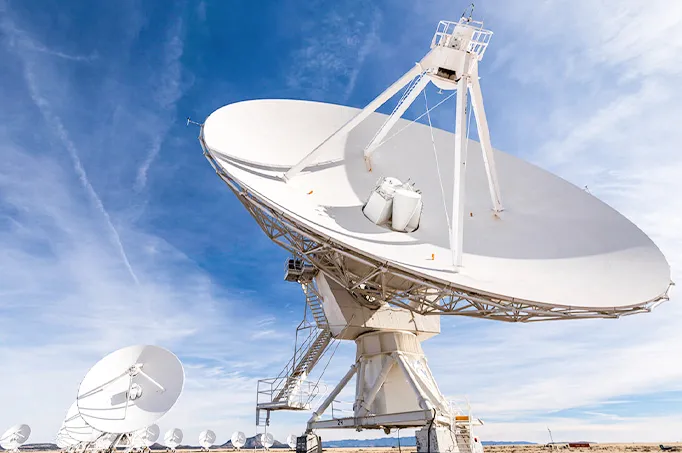
Future Applications
Mercury-wetted slip rings, given the ongoing advancements, have vast potential in future applications. Their benefits could be exploited in fields such as:
- Space Exploration: The ability of these slip rings to function reliably even in harsh environments makes them ideal for space exploration. Future missions could leverage this technology for more efficient data transmission.
- Industrial Automation: As factories pivot towards smart manufacturing, the need for robust and reliable components will rise. Mercury-wetted slip rings could be utilized in automated machinery to enhance operational efficiency.
- Emerging Telecommunication Technologies: With the advent of 5G and subsequent generations of mobile communications, demand for components that can handle high-frequency data transmission will surge. These slip rings, with their inherent characteristics, are well-suited to meet such requirements.
Despite concerns associated with the use of mercury, these slip rings, thanks to their superior performance, have carved out a niche for themselves in several critical industry sectors. It will be interesting to see how they adapt to the future dynamics of health and environmental safety concerns while remaining an essential part of advancing technology. However, their usage demands a thoughtful approach, ensuring safety measures are meticulously implemented for maximum benefit with minimal risk.
Selecting the Right Mercury-Wetted Slip Rings
Selecting the right mercury-wetted slip ring for your application requires a systematic approach to ensure that the component meets all operational and environmental requirements. Here’s a step-by-step guide to help you choose the appropriate slip ring:
1. Define the Application Requirements
- Identify the Purpose: Clearly define what the slip ring will be used for, such as power transfer, signal transmission, or a combination of both.
- Understand the Operating Environment: Consider the environmental conditions such as temperature, humidity, vibration, and whether the application involves exposure to vacuum or extreme conditions.
2. Determine Electrical Specifications
- Current and Voltage Ratings: Identify the maximum current and voltage the slip ring needs to handle. Mercury-wetted slip rings offer low resistance, which is beneficial for high-current applications, but it’s essential to choose one that matches your electrical load requirements.
- Number of Circuits/Channels: Determine how many separate electrical circuits need to be transferred through the slip ring. Multi-channel slip rings can handle multiple circuits simultaneously, which is crucial for complex systems.
- Signal Type and Frequency: If the slip ring will be used to transfer signals, consider the type (analog, digital) and frequency. High-frequency signals require slip rings with minimal signal loss and noise.
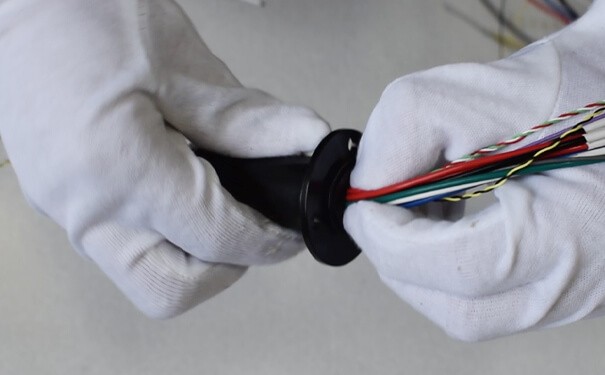
3. Evaluate Mechanical Specifications
- Size and Space Constraints: Ensure that the slip ring fits within the physical constraints of your design. Measure the available space and select a slip ring with the appropriate size and form factor.
- Rotational Speed: Consider the maximum operating speed of the rotating interface. Mercury-wetted slip rings are capable of handling high rotational speeds, but it’s crucial to select one that can operate efficiently at your required RPM.
- Mounting Requirements: Determine the mounting configuration—whether the slip ring will be shaft-mounted, flange-mounted, or require a custom setup. This affects both installation and long-term stability.
4. Assess Durability and Longevity
- Operational Lifespan: Look at the expected lifespan of the slip ring under normal operating conditions. Mercury-wetted slip rings generally have a long lifespan due to the self-renewing properties of mercury, but this can vary depending on the application’s duty cycle.
- Maintenance Needs: Consider the maintenance requirements. While mercury-wetted slip rings typically require less maintenance than traditional slip rings, regular inspections for mercury containment and integrity are necessary.
- Wear Resistance: Evaluate the wear resistance of the slip ring components, especially if your application involves continuous or high-speed rotation.
5. Consider Environmental Compatibility
- Temperature Range: Ensure the slip ring can operate within the temperature range of your application. Mercury-wetted slip rings are generally robust in extreme temperatures, but it’s essential to verify this for your specific conditions.
- Moisture and Humidity Resistance: For applications in humid or moist environments, check the slip ring’s sealing and corrosion resistance to prevent performance degradation over time.
- Vacuum and Pressure Requirements: If your application involves a vacuum or high-pressure environment, select a slip ring specifically designed to operate under these conditions.
6. Prioritize Safety and Compliance
- Mercury Containment: Given that mercury is hazardous, ensure the slip ring has adequate containment measures to prevent leaks or spills. Look for models that include safety features like double seals or containment chambers.
- Regulatory Compliance: Check for compliance with relevant regulations and standards, such as RoHS or specific industry certifications. This is particularly important in industries with stringent safety and environmental regulations.
7. Evaluate Cost vs. Performance
- Initial Cost: Compare the initial cost of the slip ring against its features and performance capabilities. Mercury-wetted slip rings are generally more expensive than traditional types, so it’s important to ensure that the benefits justify the cost.
- Long-Term Value: Consider the total cost of ownership, including maintenance, lifespan, and potential downtime. The long operational life and reliability of mercury-wetted slip rings can offer better value over time, especially in critical applications.
8. Explore Customization Options
- Custom Designs: If standard models do not meet your requirements, explore the possibility of custom-designed slip rings. Custom options can include specific channel configurations, unique sizes, or specialized materials to meet exact needs.
- Lead Time for Custom Orders: Be aware of the lead time required for custom designs. Ensure that the production timeline aligns with your project schedule.
9. Research Manufacturer Reputation
- Manufacturer Experience: Choose a manufacturer with a strong reputation for quality and reliability in producing mercury-wetted slip rings. The manufacturer’s expertise can significantly impact the slip ring’s performance and longevity.
- Technical Support and Warranty: Ensure that the manufacturer offers comprehensive technical support and a warranty. This can be invaluable for installation, troubleshooting, and ensuring long-term reliability.
10. Test and Validate
- Prototype Testing: If possible, obtain a prototype or sample unit for testing in your specific application. This can help validate the performance of the slip ring before committing to a full purchase.
- Field Trials: For critical applications, consider conducting field trials to ensure the slip ring performs as expected under real-world conditions.
By systematically evaluating these criteria, you can select the right mercury-wetted slip ring that meets your specific needs. The choice of slip ring will have a significant impact on the reliability and performance of your system, so it’s essential to carefully match the slip ring’s capabilities with your application’s requirements. Prioritizing safety, durability, and performance will ensure that you choose a slip ring that provides long-term value and operational success.
Installing Mercury-Wetted Slip Rings Properly
Proper installation of mercury-wetted slip rings is crucial to ensure their safe operation and long-term reliability. Here’s a step-by-step guide to help you install mercury-wetted slip rings correctly:
1. Preparation Before Installation
- Review Manufacturer’s Instructions: Before starting the installation, thoroughly read the manufacturer’s instructions, technical data sheets, and safety guidelines. Understanding the specific requirements and recommendations for your slip ring model is essential.
- Check Components: Inspect the slip ring and all related components for any signs of damage during shipping. Look for cracks, leaks, or any other abnormalities, especially in the seals and containment areas.
- Gather Necessary Tools and Equipment: Ensure you have all the necessary tools for installation, including torque wrenches, alignment tools, and any specific equipment recommended by the manufacturer. Also, have mercury spill kits and personal protective equipment (PPE) on hand.
- Prepare the Installation Area: Clean and prepare the area where the slip ring will be installed. The environment should be free from dust, debris, and any contaminants that could interfere with the installation or operation.
2. Safety Precautions
- Wear Appropriate PPE: Due to the hazardous nature of mercury, always wear appropriate personal protective equipment, including gloves, safety goggles, and, if necessary, a respirator.
- Ensure Proper Ventilation: Install the slip ring in a well-ventilated area to prevent the accumulation of mercury vapors in case of a leak.
- Secure the Work Area: Restrict access to the installation area to authorized personnel only, and have emergency protocols in place in case of an accidental mercury spill or exposure.
3. Mounting the Slip Ring
- Align the Slip Ring: Carefully align the slip ring with the shaft or mounting surface. Proper alignment is critical to prevent undue stress on the slip ring, which could lead to premature failure or mercury leakage.
- Use Proper Mounting Hardware: Secure the slip ring using the appropriate mounting hardware as specified by the manufacturer. Ensure that bolts are torqued to the correct specifications to avoid over-tightening, which could damage the unit.
- Check for Freedom of Movement: After mounting, manually rotate the slip ring to ensure it moves freely without binding or resistance. This step is essential to confirm that the installation is aligned correctly and that the slip ring will operate smoothly.
4. Electrical Connections
- Follow Wiring Diagrams: Carefully follow the wiring diagrams provided by the manufacturer to make electrical connections. Ensure that all connections are secure and that there is no potential for short circuits or electrical interference.
- Use Shielded Cables if Necessary: For applications involving high-frequency signals or where electrical noise could be an issue, use shielded cables to connect the slip ring to your equipment.
- Avoid Excessive Strain: Ensure that cables are routed in a way that avoids excessive strain or bending, which could damage the connections or the slip ring over time.
5. Final Checks Before Operation
- Inspect Seals and Containment: Double-check the integrity of the seals and containment areas before powering up the system. Look for any signs of potential leaks or issues that could compromise the mercury containment.
- Test Electrical Continuity: Perform an electrical continuity test to ensure that all circuits are properly connected and that there are no open circuits or short circuits.
- Monitor Initial Operation: Upon initial startup, monitor the slip ring closely for any abnormal noise, vibration, or heat generation. These could be signs of misalignment or other installation issues.
6. Documentation and Training
- Record Installation Details: Document all aspects of the installation, including the date, personnel involved, and any specific steps taken. This information is valuable for future maintenance and troubleshooting.
- Train Personnel: Ensure that all personnel who will operate or maintain the slip ring are trained on its correct use and aware of the safety precautions associated with mercury-wetted slip rings.
7. Ongoing Monitoring and Maintenance
- Regular Inspections: Schedule regular inspections of the slip ring to check for signs of wear, leaks, or other issues. Regular maintenance helps ensure the long-term reliability of the slip ring.
- Follow Manufacturer’s Maintenance Schedule: Adhere to the manufacturer’s recommended maintenance schedule, including lubrication (if applicable), tightening of fasteners, and inspection of electrical connections.
- Prepare for End-of-Life Handling: Plan for the proper disposal or recycling of the slip ring at the end of its operational life, in accordance with environmental and safety regulations regarding mercury-containing devices.
Proper installation of mercury-wetted slip rings is essential to ensure their safe and reliable operation. By following these steps, you can minimize risks and ensure that the slip rings perform optimally in your application. Attention to detail during the installation process, combined with ongoing monitoring and maintenance, will help extend the lifespan of the slip ring and maintain safety standards.
Concerns About Mercury-Wetted Slip Rings
The use of mercury, with its unparalleled benefits in slip ring technology, has raised red flags in the domain of public and user health along with stirring up ecological unease. The handling of mercury demands rigorous safety protocols, as its volatile nature puts both human health and the environment at risk.
Public and User Health Concerns
From a healthcare perspective, the concerns are manifold:
- Toxicity: Mercury’s neurotoxic effects are well-documented. Even small amounts can be harmful if inhaled, ingested, or absorbed through the skin.
- Accidental Exposure: In the event of a slip ring breach or improper handling, mercury can escape into the workplace, posing immediate health risks to those in proximity.
- Long-Term Health Impact: Long-term exposure, even in small doses, can lead to chronic health issues, including neurological and reproductive harm.
Users and the public demand assurances that the devices they operate or may come in contact with do not pose a health threat, necessitating that safety measures are both understood and meticulously implemented.
Environmental Implications
The environmental implications of using mercury in any technology are significant:
- Bioaccumulation: Once released into the environment, mercury can undergo bioaccumulation, especially in aquatic systems, entering the food chain and having a long-lasting impact on ecosystems.
- Water and Soil Pollution: Mercury spills can contaminate water sources and soils, potentially affecting drinking water supplies and agriculture.
- Global Scale Impact: Mercury pollution is not localized; it can be atmospheric, with the potential to spread across the globe, impacting regions far removed from the source of contamination.
These environmental aspects create an additional layer of apprehension about the widespread adoption of mercury-based technologies.
Critical Review and Manufacturer Responses
Given these serious concerns, there is a critical need to evaluate the use of mercury-wetted slip rings thoroughly, recognizing both their advantages and the potential risks:
- Containment Strategies: Manufacturers meticulously design these slip rings to contain the mercury securely and prevent leaks. Advanced sealing technology is one of the pivotal measures in this safeguard.
- Safety Measures during Manufacturing and Disposal: Companies adopt stringent protocols for handling mercury at production stages and ensure proper disposal of mercury-containing waste according to hazardous material guidelines.
- Training and Education: There is an ongoing emphasis on educating users about the correct handling procedures of such equipment, as awareness is the first step toward prevention.
- Regulatory Compliance: Manufacturers stay abreast of and comply with international regulations concerning the use of mercury. The Minamata Convention on Mercury is one such global treaty designed to protect human health and the environment from mercury emissions.
- Alternatives and Innovations: While mercury-wetted slip rings occupy a niche in some industries, there’s a push toward alternative materials and designs that mimic the benefits without the associated risks. Some manufacturers are investing in research and development to find safer, more sustainable options.
Manufacturers and users must critically address these concerns by implementing comprehensive safety measures, seeking innovative alternatives, and adhering to regulatory requirements to protect human health and the environment while taking advantage of the benefits these components provide. The balance between technological progress and safety continues to draw the attention of engineers, health professionals, and environmentalists alike, bringing responsibility and foresight to the forefront of technological development.
Mercury-Wetted Slip Rings Market Perspective: Key Players and Global Market Trends
The global market for mercury-wetted slip rings holds a distinct position within the broader electronics and electrical components industry. Despite health and environmental apprehensions, the need for these specialized components in certain sectors continues to foster a market supported by a handful of key players banking on their unique advantages. It’s a marketplace defined by its potential growth, trends, and the market strategies employed by these key players.
Current Manufacturers and Major Players
Considering the cutting-edge nature of the product and strict regulatory confines, the mercury-wetted slip rings market is dominated by a limited number of manufacturers, each renowned for their adherence to safety, quality, and innovation. Key global players include:
- Meridian Laboratory: Known for its unique rotor and precision, Meridian Laboratory has been a significant player in the industry for over 50 years.
- Barlin Times: This China-based company stands out in the global market thanks to its various patent designs and broad product range.
- Morgan Advanced Materials: A materials engineering company based in the UK, Morgan Advanced Materials produces a wide spectrum of specialized, high-performance engineering products, including mercury-wetted slip rings.
Fill out the form to receive a quote and find out more about our Mercury-Wetted Slip Rings solutions.
Market Size, Growth and Trends
As there are few publicly available resources on the exact market size of mercury-wetted slip rings due to their niche status, gauging the actual figure can be challenging. However, reports suggest a steady, albeit moderate, growth due to the specific, high-tech applications these components support.
Market trends mainly revolve around the telecommunication, industrial automation, and defense sectors, as these fields typically push the need for efficient data transmission systems. With the evolution of 5G technology and the development of AI systems, an increase in market demand is expected.
One emerging trend is the growing interest in substitute materials that yield the same benefits as mercury but without health and environmental risks. This development is driven by regulatory pressures and a broader societal shift towards greener and more sustainable technologies.
Future Market Direction
Given the challenges posed by mercury’s health and environmental impacts and stringently regulated use, predictions for the future direction of the mercury-wetted slip rings market largely hinge on how manufacturers navigate these hurdles.
- Regulatory Pressures: With increasing regulatory scrutiny, it is predicted that companies will invest more in researching alternative materials, affecting the current market status of mercury-wetted slip rings.
- Technological Advances: As high-speed and precise communication becomes even more critical, areas such as space exploration, autonomous vehicles, and advanced robotics could provide new avenues for growth.
- Emerging Markets: Emerging economies, particularly in Asia, with their fast-paced growth in telecommunications and industrial automation, are expected to serve as potential new markets for these specialized components.
The mercury-wetted slip rings market continues to hold its own in the electronics and electrical components industry, spurred by ongoing technological advancements and the high-tech sectors. However, the transition towards a more sustainable and environment-friendly approach to technology suggests an inevitable shift in the industry’s landscape. Existing market players and newcomers will need to adapt innovatively and quickly to remain competitive.
Conclusion
Mercury-wetted slip rings represent a critical technology in ensuring high performance and reliability in various industries. While concerns about their environmental impact exist, advancements in manufacturing and handling continue to mitigate these risks.
FAQs about Mercury-Wetted Slip Rings
Q: Why are mercury-wetted slip rings preferred in high-speed data transmission applications?
A: They offer minimal electrical resistance and noise, ensuring a clean signal, which is essential for high-speed data integrity.
Q: What are the environmental concerns associated with mercury-wetted slip rings?
A: The primary concern is mercury’s toxicity and potential for environmental contamination. Proper handling, use, and disposal protocols are essential.
Q: Can mercury-wetted slip rings be used in any application?
A: While versatile, they are best suited for applications where signal integrity and reliability are critical due to their cost and the complexities related to mercury usage.
Q: How do manufacturers address the health and safety concerns related to mercury?
A: Manufacturers use sealed units to prevent mercury exposure and comply with environmental and safety regulations to protect users and the environment.
Q: What does the future hold for mercury-wetted slip rings?
A: With continuous improvements in technology and handling, the future looks promising. Innovations aim to reduce environmental impact while maintaining the benefits that these slip rings provide.
Q: What is a mercury-wetted slip ring?
A: A mercury-wetted slip ring is a type of electrical connector designed to transfer power and electrical signals from a stationary to a rotating structure. It uses liquid mercury as the conducting medium, promoting superior electrical conductivity, low electrical noise, and extended component lifespan compared to conventional slip rings.
Q: What are the benefits of using mercury-wetted slip rings?
A: Mercury-wetted slip rings have several benefits, including:
- Low Contact Resistance: They maintain a low and consistent resistance, ensuring a steady electrical connection.
- No Electrical Noise: They generate very little electrical noise (or interference), guaranteeing clear and accurate signal transmission.
- Long Life Span: They typically exhibit a much longer lifespan than standard slip rings due to their low wear and tear.
Q: What are the risks associated with mercury-wetted slip rings?
A: Mercury-wetted slip rings pose potential health and environmental risks due to their mercury content, a toxic heavy metal:
- Health Risks: Mercury can be harmful if inhaled, ingested, or absorbed through skin exposure. It can cause neurological and reproductive harm and, in high exposures, damage to the kidneys and digestive system.
- Environmental Impact: Mercury released into the environment can accumulate in the food chain, especially in aquatic ecosystems, and contaminate water and soil resources.
Q: Where are mercury-wetted slip rings used?
A: Due to their unique properties, these slip rings are used in several industries that require high-speed and clear data transmission, including telecommunications (especially in satellite communication), radar systems (used in aviation, maritime, and defense sectors), and GPS systems (used extensively in modern navigation and earth observation tasks).
Q: How are manufacturers responding to the risks associated with mercury-wetted slip rings?
A: Manufacturers of mercury-wetted slip rings are actively addressing concerns through a variety of strategies:
- Containment Measures: Designs aim to securely contain mercury and prevent leaks, using advanced sealing technologies.
- Safety Protocols: Strict safety regulations are followed during production and disposal stages.
- Training: Users are educated about the correct handling of these components.
- Regulatory Compliance: Manufacturers comply with global regulations, such as the Minamata Convention on Mercury.
- Alternative Materials: Efforts are being made to find alternative materials that can provide similar benefits without the associated risks.
Q: What is the future of mercury-wetted slip rings?
A: The future of mercury-wetted slip rings depends largely on technological advancements and regulatory pressures. There’s growing interest in alternative materials that provide the benefits of mercury without its environmental and health risks. At the same time, their unique advantages and the expanding need for high-speed and noise-free communication in sectors like space, automation, and telecommunications, hint at new growth avenues.
See What We Can Do

